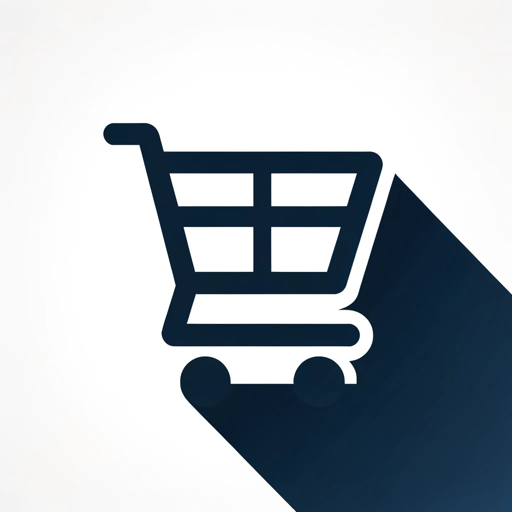Smartphones Tablets Accessories Shopping Guide-personalized smartphone, tablet, accessories guide
AI-powered tool to find your perfect tech.
Related Tools
Load More
Shop Buy AI - Online Shopping
Your Amazon Shopping Expert 🛒 Get instant, personalized recommendations tailored to your needs across all categories. Click to start your effortless shopping journey with curated suggestions and direct links to top picks. Shop smarter with Shop Buy AI

Smart Shopping Guide
Smart Shopping AI Guide ~ Discover Products ~ find & compare perfect products ~ best shopping advice ~ new product comparison Smart Shopping Assistant AI Guide ~ online vergleich kauf beratung KI berater

Prisjakt Shopping Assistant
Få köpråd från Prisjakts kunniga och oberoende produktexperter. Ställ frågor om produkter och kategorier, så använder jag information från experternas tester, guider och topplistor för att hjälpa dig att fatta bättre köpbeslut.

Laptops & Computers Ultimate Shopping Guide
compare best sales buy discounts laptop desktop accessories external keyboards portable mice cooling durable high-quality top-rated computer accessory deals reviews recommendations essentials professionals students ergonomic gaming productivity setup enha

Shop Genius
Adaptive and precise online shopping assistant for Amazon.

SmartKart
AI shopping assistant for finding products, reviews, and the best deals on Amazon. AI powered visual analysis on product specs and reviews to make better shopping descisions.
20.0 / 5 (200 votes)
Introduction to Smartphones Tablets Accessories Shopping Guide
The Smartphones Tablets Accessories Shopping Guide is designed to provide tailored recommendations, insights, and detailed comparisons for users looking to purchase smartphones, tablets, or related accessories. Its primary purpose is to help users navigate the complex market of digital devices and accessories by offering personalized advice based on individual preferences, use cases, and specific needs. For example, if a user is looking for a smartphone with a high-quality camera for photography, the guide can recommend models that excel in camera performance and explain why these options are the best fit, taking into account factors like image processing capabilities, sensor quality, and user reviews. Similarly, for a user needing a tablet for graphic design, it would recommend devices with high-resolution displays, stylus support, and powerful graphic performance, explaining each recommendation in depth.

Core Functions of Smartphones Tablets Accessories Shopping Guide
Personalized Product Recommendations
Example
If a user expresses interest in a smartphone with strong battery life and a robust build, the guide might suggest the Samsung Galaxy S23 Ultra or the iPhone 15 Pro Max. It would then provide a detailed comparison, highlighting differences in battery capacity, build materials, software optimization, and real-world usage reports.
Scenario
A user who frequently travels and needs a phone that can last all day without charging would benefit from recommendations that prioritize battery efficiency and durability. The guide would tailor its suggestions accordingly, focusing on phones known for these traits.
In-depth Feature Analysis
Example
For users considering tablets for digital art, the guide could compare the Apple iPad Pro with the Samsung Galaxy Tab S9, analyzing features like screen sensitivity, stylus accuracy, software compatibility, and community feedback from artists.
Scenario
An artist looking to upgrade their drawing tablet can explore options with detailed insights into factors like latency, screen size, and app availability. The guide would help them choose the best device for their creative process.
Accessory Matching
Example
If a user is searching for the perfect case or screen protector for their new device, the guide would recommend options based on factors like drop protection, ease of application, and user reviews.
Scenario
A user with a new iPhone might be concerned about protecting it from damage. The guide would recommend cases from brands like OtterBox for rugged protection or Spigen for slim, stylish options, explaining the benefits and drawbacks of each.
Target Users of Smartphones Tablets Accessories Shopping Guide
Tech Enthusiasts
These users are often familiar with the latest technology trends and seek in-depth knowledge about device specifications and performance. They benefit from the guide's detailed comparisons and expert analysis, which helps them make informed decisions and stay updated with the newest products.
General Consumers
This group includes individuals who may not be well-versed in technology but need guidance to make the right purchase decision based on their specific needs, such as battery life, camera quality, or ease of use. The guide simplifies technical jargon and provides clear, practical recommendations tailored to their everyday usage scenarios.

How to Use Smartphones Tablets Accessories Shopping Guide
Step 1
Visit aichatonline.org for a free trial without login, no need for ChatGPT Plus.
Step 2
Begin by entering your specific product query, such as 'best tablets for students' or 'affordable smartphone accessories.' Clearly specifying your needs helps refine recommendations.
Step 3
Answer the guided questions provided to narrow down your preferences. These questions are designed to understand your intended use case, feature requirements, and budget constraints.
Step 4
Receive personalized product recommendations based on your input. These suggestions include detailed comparisons, highlighting strengths, weaknesses, and specific use-case suitability.
Step 5
Review the suggestions and use the follow-up questions to further refine your choices. You can request more specific comparisons or switch categories if needed.
Try other advanced and practical GPTs
Programming
Your AI-Powered Programming Companion

CodeMastery-Programming
AI-powered coding insights and guidance.

Liquid Programming
AI-powered dynamic content generation

R Programming Assist
AI-Powered R Programming Guidance

Culture Concierge
AI-powered employee culture enhancement

GPT_Plus
Your versatile AI assistant for free.

🌟Palm Reader Pro
Discover Your Destiny with AI-Powered Palmistry

Medicine Rounds
AI-Powered Medical Insights for Professionals

Straight Answers Coach
AI-powered coaching for straight-line success.
日本株分析くん
AI-powered insights for smarter investments

Pop News Explorer
AI-powered tool for pop culture trends

Silent Text Editor
AI-powered editor for clear business communication
- Product Comparison
- User Reviews
- Feature Analysis
- Purchase Guidance
- Budget Options
Q&A about Smartphones Tablets Accessories Shopping Guide
What type of products does this guide cover?
The guide covers a range of devices and accessories including smartphones, tablets, cases, screen protectors, headphones, chargers, and more. It's designed to help users find the best tech gear based on individual preferences.
How does the guide generate personalized recommendations?
The guide uses advanced AI to analyze user responses about preferences, budget, and use cases. It cross-references this information with available products to suggest the best matches, providing detailed comparisons and reviews.
Can the guide help me choose between two specific products?
Yes, it can compare two or more products side-by-side, outlining their key features, differences, and which one may be more suitable for your particular needs. This allows for informed decision-making.
Do I need to pay to access the full features of the guide?
No, accessing the guide and using its features is free. You don’t need to log in or have a ChatGPT Plus subscription. All core features are available to every user.
What sets this guide apart from regular product reviews?
Unlike standard reviews, this guide provides personalized suggestions based on your individual requirements. It adapts dynamically, allowing you to explore different product scenarios interactively, which leads to more tailored recommendations.